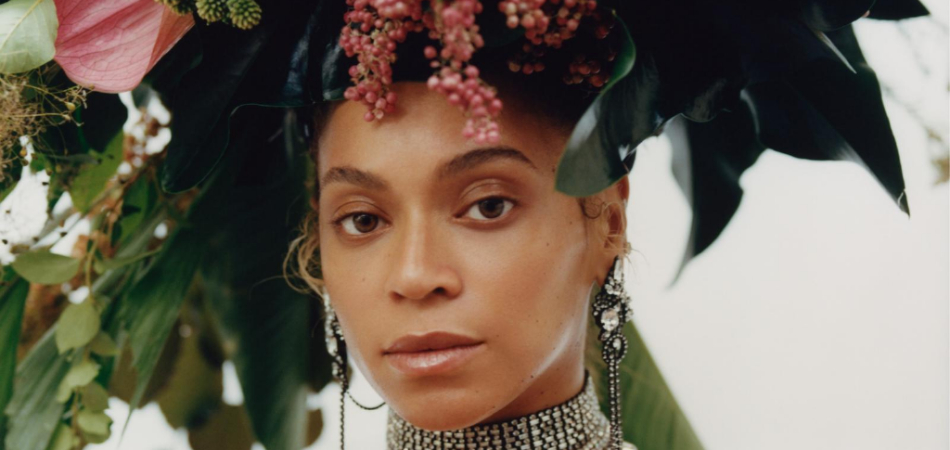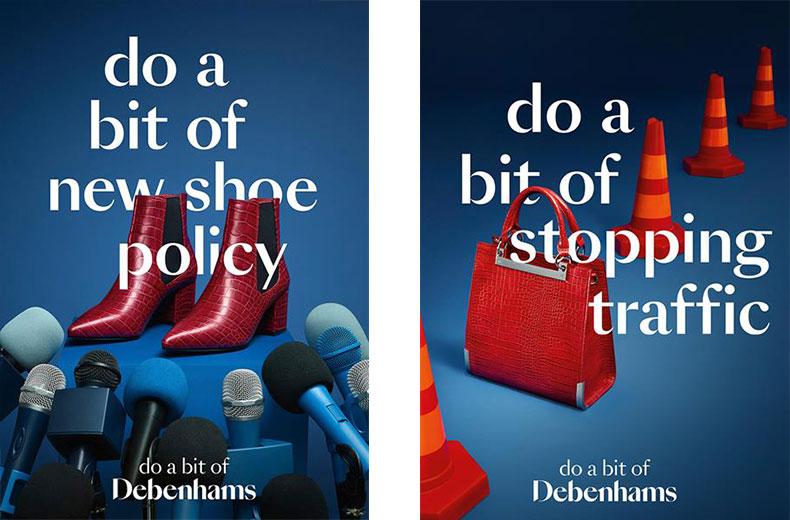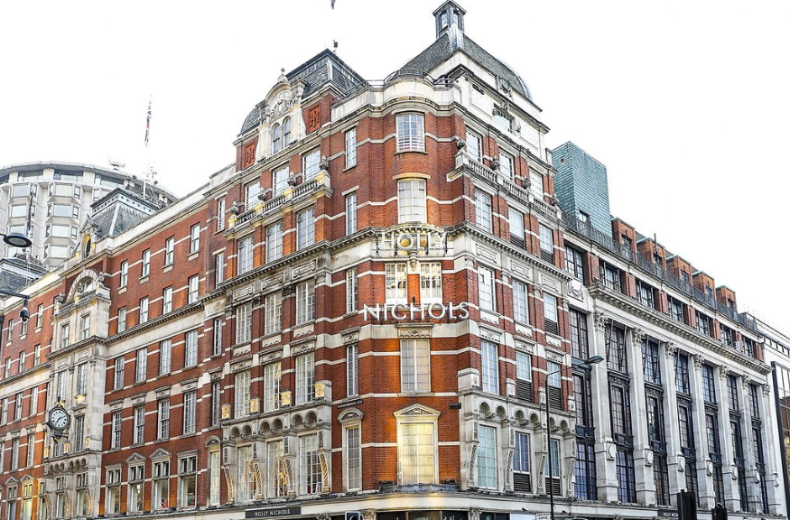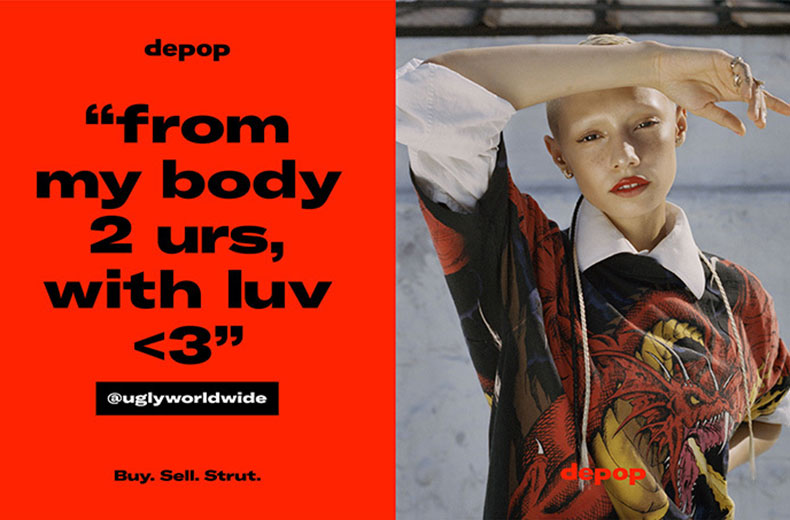
‘Subculture is the most powerful tool we have’
Louis Persent, Co-Founder and Creative Director at Weirdo on the power of embracing the niche
The face of fashion is changing. Whether it’s through diverse casting in ads, technological advancements or retail shifts, the industry is moving to reflect today’s world, our world.


The face of fashion is changing. Whether it’s through diverse casting in ads, technological advancements or retail shifts, the industry is moving to reflect today’s world, our world. No longer are fair-skinned waifs the go-to for brands to showcase their latest collections. In their place storm a technicolour range of people, who are yes predominantly models, but ones that we can recognise ourselves in and ones that better reflect the world we inhabit.
The covers, pages and even mastheads of magazines are changing too. September issues traditionally mark fashion month and so often feature more content and a more high-profile celebrity to grace the cover. For September 2018, the most influential titles predominantly chose women of colour for their covers, a poignant shift from usual magazine casting. From Beyoncé at US Vogue - photographed by 23-year-old Tyler Mitchell, the first black photographer to shoot a US Vogue cover in the publication’s 126-year history - to Rihanna at British Vogue, model Slick Woods, pregnant and resplendent on Elle UK, as well as Kanye, North and Saint West on Harper’s Bazaar, the September issues held up a mirror to our cultural landscape.
The second noticeable change within in the industry is the way that fashion is now consumed. Fashion brands are adopting new technologies and technology brands are looking to embrace fashion. From the launch of Amazon’s fashion line, the Amazon Clothing Store, and the Echo Look, which acts as a personal wardrobe stylist, to Snap appointing its first fashion editor, these technology-focused brands which may not have originally been operating in this space, are recognising that fashion is big business.
Up-and-coming labels are benefiting from a huge and engaged social media following to build up their reputation and to generate a feeling of authenticity. Businesses such as Réalisation, Cult Gaia and Revolve are recognising that the path to success may lie in the power of the double-tap of a consumer’s thumb.
As the industry and those around it shift and change, fashion is no longer fickle but has the power to be reactive, exciting and even sometimes, yes really, a little bit humorous. The brands featured below have done just that.

In today’s fast paced, socially savvy, inter connected world, it’s amazing how quickly brands, can feel dated. In the past few months we have seen several of fashion’s top powerhouses refresh their logos and align them with a more contemporary feel.
The French fashion house Celine has developed a more minimalist design that reflects the brand’s 1960s logo. Using typography from the 1930s, the logo takes on a simpler, more balanced feel. Similarly Burberry launched a new brand identity for the first time in 20 years. The tessellated monogram, in bright orange and peach, features the interlocking initials of the brand’s founder, Thomas Burberry. Created by Peter Saville, he revealed that although he was inspired by the house’s archive, he felt it was important to place a contemporary twist on both the font and design.
With the supposed decline of the high street comes the inevitable fall of many of our best known stores. With House of Fraser announcing its move into administration earlier this year, fashion-focused department stores began to realise they needed to try something new. Debenhams worked with Mother London on Do a bit of Debenhams, a total rebrand which sets out to show off the brand’s fun and playful personality. The agency refreshed the logo, drawing from the store’s 200-year heritage, with the overarching strategy encouraging consumers to reclaim the joy of shopping.
Ever the provider of last minute Christmas presents, John Lewis has undergone a rebrand. Led by Pentagram, the new creative direction sees John Lewis and Waitrose unified under one brand identity for the first time. The new brand, & Partners, aims to reposition the business as both modern and progressive. The rebrand also increases the focus on fashion with the launch of a new in-house fashion label John Lewis & Partners. It is an own brand womenswear collection of 300 designs, created entirely in-house.

With fashion month in full flow, many brands are looking to grab headlines with strategic stunts, cementing press inches and creeping ahead of their competitors. As is the case for Harvey Nichols and its September rebrand. The department store has worked with TBWA\London to change its name to Holly Nichols for fashion month, to celebrate women and launch the new campaign Let’s Hear it For the Girls. The rebrand includes the storefront, social channels and web site and, along with the ad, there will be events in store from trunk shows to brand parties and talks. Graffiti style quotes from famous women throughout history, from Coco Chanel to Mary Shelley and Melinda Gates have been spray-painted onto the pavements around the store in London’s Knightsbridge.
In another London Fashion Week installation, Anya Hindmarch has created a Chubby Cloud in Banqueting House, London. Visitors can climb onto the world’s largest beanbag and stare up at the Ruebens painted ceiling, the largest surviving work by the artist still in its original location in Europe. The installation, inspired by the AW18 Chubby collection, will feature mediation classes, music and live talks from bedtime stories to an interview with Hindmarch herself. There will also be a popup shop and café, all Chubby Cloud themed.
Ted Baker recognised they needed to think beyond the walls of their stalls and so, working in-house, they created a five-week installation in Old Street Station to launch their Colour By Numbers collection. They showcased the collection as well as hosting yoga classes, a nail-bar and styling workshops. It marks the first time the brand has created a longer installation that was also shoppable.
Besides online shopping, fashion is getting technical, with many brands developing bespoke technology or simply capitalising on that which already exists. For the first day of this month’s New York Fashion Week, New Balance created an activation as part of their Be the Exception campaign that used AI to identify and reward people on the street who didn’t follow the trends. The brand worked with VML to gather data on current fashion trends and feed them into AI-powered cameras. In real time, the camera would scan and spot passers-by whose outfits stood out from the crowd. These people were then given a pair of New Balance trainers with their custom data printed onto the box. The activation spoke to a fashionistas desire to be unique, and rewarded them for it.
This summer will be remembered as one of sun, football and of course Love Island. But while we gossiped about the couples, the drama and all the texts, Missguided were busy selling clothes. The brand’s in-house team partnered with ITV, filling the contestants’ wardrobes with new clothes every day. Viewers could then shop the outfits from the show through the Love Island app. The brand recognised that their core 16 to 29-year-old female audience would be watching, and most likely shopping. And the move paid off with the brand’s sales spiking up to 40% between 7pm and midnight when the show aired.
While fashion gets technical, technology companies are also beginning to stray into fashionable realms. As is the case with Amazon. Not content with taking over books, technology and food, they launched a fashion range last year. And now they have created the Prime Wardrobe, a try before you buy scheme that allows Prime members to order up to eight items of clothing and only pay for what they keep. Above+Beyond created two 30-second TV slots, as well as accompanying social content, to go with the launch. The ads humanise the brand, bringing it into people’s homes and blurring the lines between online retailer and shopfront.
Although fashion is moving into a more technological era, consumers’ longing for the physical, the tangible, still fails to dissipate. They want fashion to be acknowledged as part of their lifestyle, not simply a retail exercise. The online retailer MatchesFashion.com started out life as a boutique in London’s Wimbledon and only moved online further down the line. But now the brand has now opened a 7,000 square foot, six storey retail space set in a townhouse in Mayfair, fusing this need for the physical with their successful digital platform. It is a holistic offering where shoppers can schedule one-to-one appointments with Matches stylists for a tailor-made luxury shopping experience, buy stickers from the Prada vending machine or simply pop in to read a magazine, enjoy the café and tropical garden.
For the brand’s largest collaboration to date, Louis Vuitton collaboration with the artist Jeff Koons on a celebratory range of fine-art inspired pieces. Wednesday were tasked with creating a digitally led, 360 campaign that recognised both the work of Koons and the fashion house while also recognising the beauty of these iconic works of art. So, they brought the artworks to life. In Masters – a collaboration with Jeff Koons, the selected paintings were translated by Koons onto Louis Vuitton handbags and were then animated online, to be integrated across social media. Da Vinci’s Mona Lisa gave a cheeky wink, Ruebens’ scantily clad pair were busy canoodling and Van Gogh’s landscape trippily moved across the screen.

Towards the end of last year, Stella McCartney partnered with Ellen MacArthur and her foundation to examine the environmental effects of the fashion industry, more specifically of the impact of the production and manufacture of textiles. A report by the Ellen MacArthur Foundation revealed that the equivalent of one dustbin truck worth of textiles is landfilled every second. The claim is that, if nothing is changed, the fashion industry will consume a quarter of the world's annual carbon budget by 2050. McCartney has always placed sustainability at the heart of her business and she continues to innovate, as seen with the recent launch of her vegan Stan Smith trainers in collaboration with adidas.
The increase of brands that support and promote a circular economy is reflected in the growing success of resale websites such as Depop. Consumers are savvier about sustainability and this knowledge has fuelled the trend for both streetwear and second hand or vintage clothing. A recent THRED UP survey revealed that the re-sale industry is currently growing 24 times faster than traditional retail. Depop recently launched their first global campaign with DesignStudio which used the real bios of app users to capture the spirit of the platform’s diverse community. The posters are on display across the London Underground and New York’s subway.
Looks like you need to create a Creativebrief account to perform this action.
Create account Sign inLooks like you need to create a Creativebrief account to perform this action.
Create account Sign in